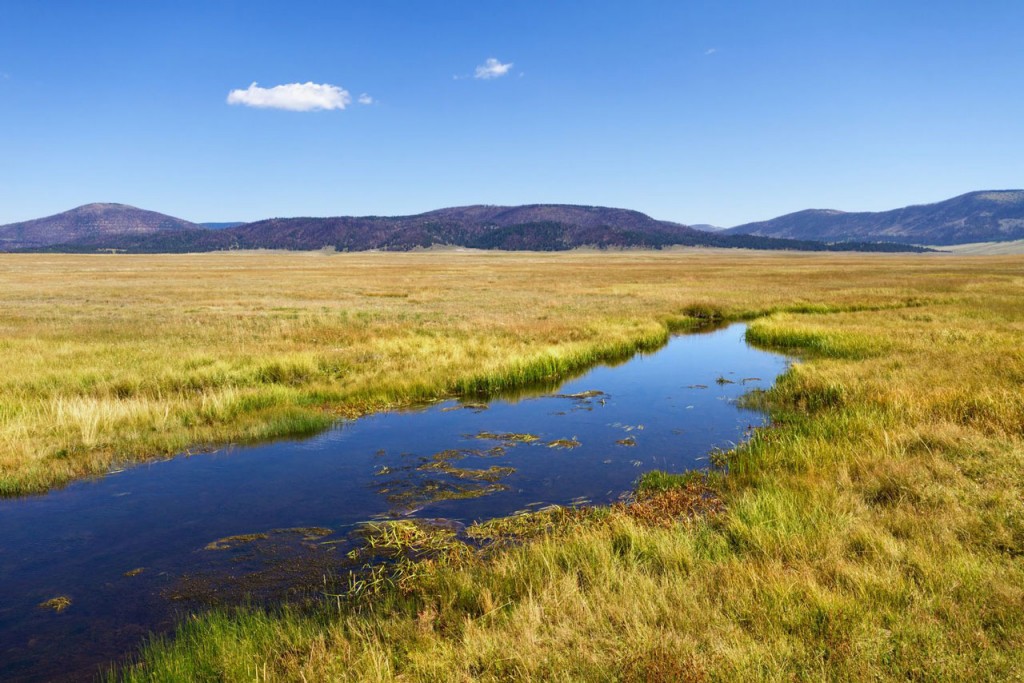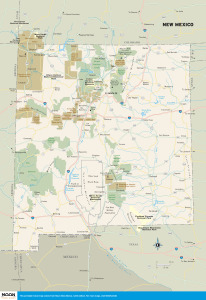
Valles Caldera National Preserve. Photo © sumikophoto/123rf.

New Mexico
Temperate climates, plain old “pretty” landscapes—who needs ’em? New Mexico’s extreme terrain, from stark lava beds to gleaming fields of gypsum, is much more exciting. Snowcapped peaks are just a short drive from arid deserts, and you can spot hardy animals, odd birds, and stunning rock formations everywhere in between. Whether remote wilderness areas or lesser-known routes in popular parks, these otherworldly spots are almost always empty.Every corner of the state holds some enticing natural adventure, but due to long driving distances, you’re better off limiting your exploration to one quadrant at a time. This way, you’ll spend less time in the car and more time on the land. Which ones you visit depends on what time of year it is and, equally important, what altitude you can handle. When you arrive, it’s tempting to put on your boots and head straight out, but unless you’re coming from a comparable elevation, stick to clambering in foothills and scenic drives for the first couple of days. Drink plenty of liquids, and head to bed early.
From Red River, a hike up the state’s highest mountain typically requires a few days. Or you can take the short, steep route from Taos Ski Valley, doable in a long afternoon. Either way, don’t go any time other than June, July, or August.
Top-heavy hoodoos—precarious, windswept sandstone towers—are the hallmark of this barren landscape south of Farmington. There are no trails and no services, and virtually no other hikers, so come prepared with plenty of water, a compass, and an appreciation for solitude. Don’t want to hike? Head to nearby Angel Peak Scenic Area instead, for fine views.
The lush alpine meadows that line this ancient volcanic basin are some of the state’s most pristine. Every season here is beautiful, whether the trout streams are high with spring runoff or the knee-deep snow is prime for snowshoeing. But if you plan just to hike on your own, without a larger group tour, plan to come between June and September, before the cold snap.
Once the edge of the brutal Dust Bowl, this protected prairie now looks a bit more hospitable, brushy and green. The real surprise comes when you drive down to Mills Canyon, a red-striped chasm with a lush bottom. Camping in this hidden spot, with hawks wheeling overhead, is like being hidden away from the world.
Excerpted from the Ninth Edition of Moon New Mexico.